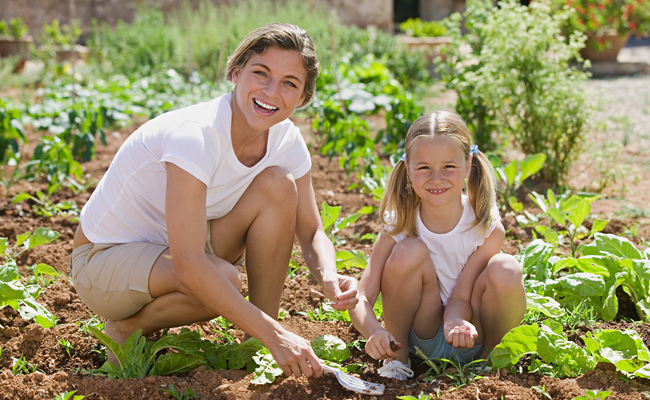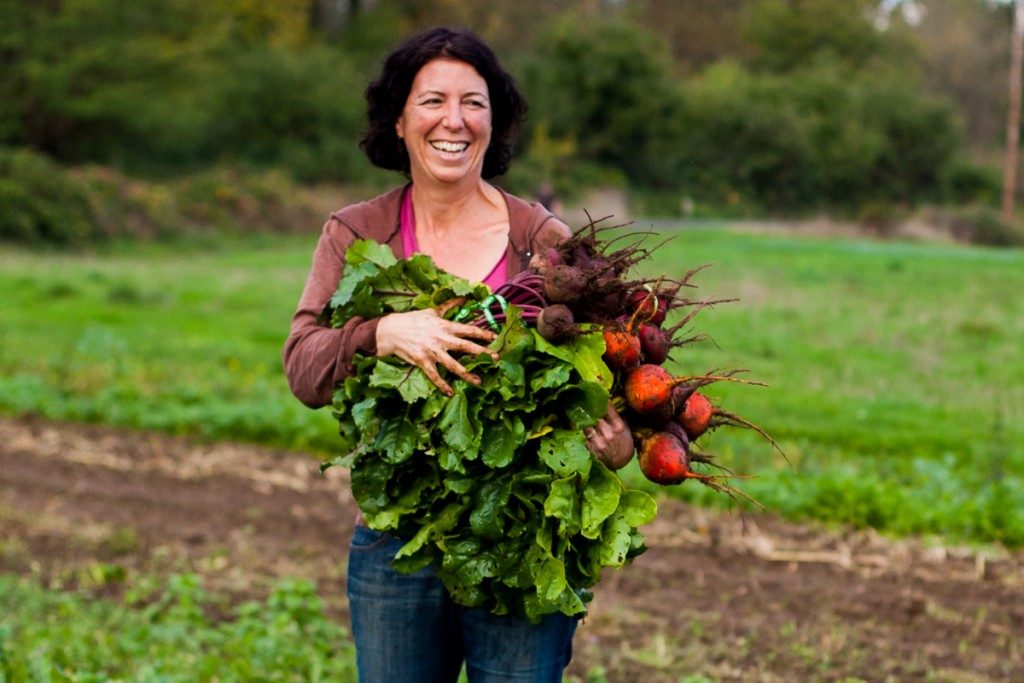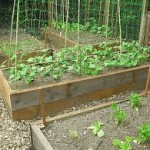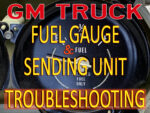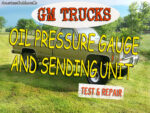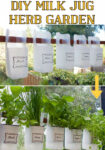Category: The Garden
Organic Pasture Based Farming-Katharos Farms
Katharos Farms located in Columbia, Tennessee practices pure Organic Pasture Based Farming for the best product for your family
See also GMOs In You
The Art Of Hot Water Bath Canning
Homesteading is a lifestyle consisting of the trials and tribulations of self-sufficiency[/dropshadowbox]. From an outsider’s point of view, one might see the instant benefits of this choice as a sense of newfound freedom, privacy, independence, and simplicity. However, those considering this lifestyle also know the deeper layers to homesteading, beginning with arguably the most important factor- food preservation. Those of us living in regions affected by the harsh elements of our ever-changing seasons know just how important it is to stay prepared.
Nowadays, we can hardly run through a department store without our eye catching some sort of artwork or novelty home décor piece that displays the simplicity of a mason jar. I find myself becoming the object of someone’s judgement as I stand in line to pay for my 12-pack, feeling as though a different 12-pack of some sort of liquid redemption might catch less attention than my hollow glass jars. The first and only question I ever receive as soon as I grab them from the grocery store shelf, “What sort of craft are you making?” I already feel guilty and I haven’t even responded yet. Continue reading
The Demographics of the American Food Gardener
Here are some handy little statistics provided by the National Gardening Association about the makeup of the average food gardener in the United States.
54% are female.
68% are 45 years old plus.
79% either attended or graduated from college.
They average about 5 hours each week tending their gardens.
The average food garden is approximately 600 square feet.
As of 2009, 37% of American households had some sort of food garden, with 21% of those being first timers.
23% were located out west, 26% were from the midwest, 29% were southern and 22% were from the northeast.
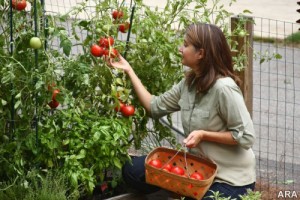
The most popular items are in order:
Tomatoes 86%
Cucumbers 47%
Sweet Peppers 46%
Beans 39%
Carrots 36% 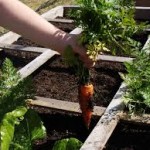
Summer Squash 32%
Onions 32%
Hot Peppers 31%
Lettuce 28%
Peas 24%
Sweet Corn 23%
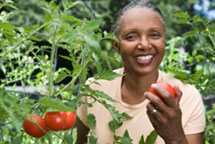
We tend to grow about everything on the list in addition to some beets, rhubarb, broccoli, and a few other odds and ends. It has been estimated that a 1/4 acre of land can feed a family of 4 year round. We do some canning, however it is usually limited to jams. Everything else is either vacuum packed or prepared and frozen. We do dry our hot peppers. There are some studies that speak to the best methods for retaining the vitamins and/or longevity to your preservation methods I would dispute the NGA’s finding on the 5 hour week, although I’d say most folks don’t calculate the time they spend doing what they enjoy. I’d also add that we don’t necessarily save money growing our own food;the time and labor my wife exerts picking beans is surely worth more than the 3 cans for 99 cents at the local supermarket. We do however, know that they are pure 100% organic.
The statistics above don’t paint the picture of grandpa and grandma in the bibs and house dress working the soil, rather it is just as likely the suburban soccer mom who wants a healthy alternative to the processed and packed, chemically preserved and shipped foods that end up in our cupboards.https://american-outdoors.net/2015/03/03/demographics-american-food-gardener/
Eggs and Coffee and Big Fat Tomatoes
Early in our marriage, my wife and I started gardening. We lived in town on a small lot but it gave us an excuse to get outside. During each spring we made the pilgrimage to the local hardware store or greenhouse to pick up seeds, starter plants, fertilizer and soil. Now, eons later in our lives, we live on land with room to grow about whatever we want. My wife still makes out the list of items to pick up but as the years have passed, the list has shrunk. The more time I spent driving into town and loading dozens of 40 lbs bags of powdery dirt into my truck, the more I realized there are better ways to prep a garden. People, even 50 years ago, didn’t spend three times the cost of the produce in peripherals before they even put a seed in the ground. My wife believed if it came from the greenhouse then it must be good dirt. Yes, that is likely true. It is also true that the black mulchy dirt just inside our timber line is just as good, and without a doubt 100% organic. She had her epiphany and ran with it, but I digress. While you sit in your house staring out the the window into winter pergatory and marking the days with a knife on the table, there are things you can do to prep for the growing season without even putting on a coat.
Eggs shells and coffee grounds are in most every cupboard and icebox in America as well as every kitchen trash can. But it has become fairly common knowledge among those with the alleged green thumbs, that coffee grounds are rich in nitrogen and a fantastic supplement to garden soil. They hold a ph somewhere around 6.5. Whether you add it to a compost pile or use it as a separate application to the topsoil, it is a very beneficial and organic, and didn’t I mention it was free? When adding to our compost collection, we simply try to mix it in with the dead grass, vegetation, leaves and whatever else you rake up. You can actually throw most paper coffee filters in there as well for good measure, but keep the pot in your hand. Flip that mess over a couple times each month to keep it cooking properly.
Eggs as well, can provide a cheap and healthy boost to your flowers and produce and has nature’s seal of approval. Eggs contain a great resource of calcium and can be used in a variety of ways. They do not break down quickly; a shell simply broken in your hand can remain in that condition for several years. The smaller the pieces, the quicker they will become one with the soil. 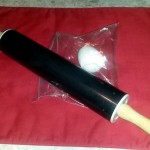 The method we use is to just place them in a clear plastic bag and crush them using a rolling pin. Doesn’t take very long and justifies why you keep that thing in the drawer and never use it. I’ve read online articles where folks will grind eggshells up in a blender, food processor, etc. It works, but I would advise that if you go that way, buy a second hand blender at a flea market. My experience is that the really small bits of the shell can be difficult to clean out of a blender, and I prefer not to find them later in my smoothie. There is no perfect science to the application. Some gardeners will sprinkle the bits of shell over the topsoil; others may blend it into the dirt. It continues to fertilize your garden long after you apply it. You can think of the eggshell bits as a sort of time release bouillon cube.
The method we use is to just place them in a clear plastic bag and crush them using a rolling pin. Doesn’t take very long and justifies why you keep that thing in the drawer and never use it. I’ve read online articles where folks will grind eggshells up in a blender, food processor, etc. It works, but I would advise that if you go that way, buy a second hand blender at a flea market. My experience is that the really small bits of the shell can be difficult to clean out of a blender, and I prefer not to find them later in my smoothie. There is no perfect science to the application. Some gardeners will sprinkle the bits of shell over the topsoil; others may blend it into the dirt. It continues to fertilize your garden long after you apply it. You can think of the eggshell bits as a sort of time release bouillon cube.
Egg shells have also been used successfully as plant start containers. A half shell with a little soil, placed into the original egg carton is free, natural and disposable. Set them on a window sill or table next to the glass just as you would with store bought containers. When it is time to transplant, just move the shell holding the plant directly into the ground. Egg shells do not spoil or “go bad”. They won’t start to stink up the house, but you might want to wash them beforehand if you have any concern over bacteria from the contents.
“Egg juice” and “egg milk” are a few names we call the potion we created for spraying plants. We take crushed shells and put them inside a milk jug and fill it with water. After letting them sit for a couple of days we end up with a nice milky mixture of calcium and water that we will transfer into a watering can. We do a lot of container and raised bed type gardening and usually mixing about a cup of the solution to a gallon of water per treatment is about all we need to use for a small area of plants. The shells by the way, are reusable.
While there are plenty of tips and tricks on line regarding how to keep insects and pests off of your plants, and we use several, one method we have found to be very successful is simply laying out broken egg shell pieces around plants such as tomatoes, lettuce, peppers, broccoli. Snails, slugs and other assorted vile beasts bent on dining locally and after hours at your place find the sharp edges of the shell to be cutting and dangerous to their health. A snail may think it is rude, but it works and it is easy.
In my mind I am a master gardener bar none. In reality, I’m a hobbyist slash amateur who is cheap as hell and always on the lookout for ways to save money and repurpose my trash. Our gardens don’t tower over the land like a cluster of giant green redwoods and I don’t expect I’ll be posting 200 lb Beef Steak tomatoes anytime soon. I have noticed though, that we used to have small, average looking vegetables that were slightly inferior to what you could find at walmart, using the best chemical enhancing sprays, granules, powders and solutions I could buy. Using organic methods, and tips such as these, have really paid off and now I’m only washing bug poop and dust from my beets and lettuce instead of agent pink or some third eye producing chemical from the sci fi channel. Here’s hoping you have a bountiful harvest.
TMP

